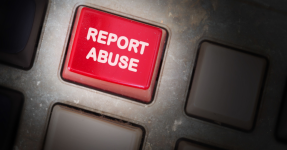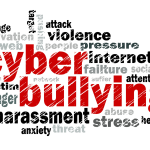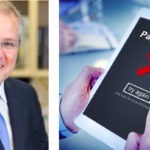How Can I Get Abusive Content Removed from the Internet?

Federal laws which came into effect earlier this year give the Australian eSafety Commissioner sweeping powers to gather information about those who post abusive, abhorrent or threatening content – including the identities behind pseudonyms – and compel internet companies to remove the content under threat of heavy fines and injunctions.
What do these new laws mean for users?
The good news for those who are the target of such content is that the laws are designed to make reporting much easier and removal much quicker.
Reporting can be done anonymously through the e-Safety website and you can go straight to the e-Safety Commission without having to report the content to the internet company first.
Safety first
Most apps and websites and social media platforms have ways which you can report offensive or illegal material or behaviour that feels unsafe – although in many cases, people who have asked platforms for assistance have complained that action can be slow, although Australia’s new laws are designed to encourage these global tech giants to act more quickly, by reducing the timeframe for response to ‘take down’ requests to 24 hours.
If the material is not removed civil penalties can be imposed, including fines up to $111,000 for individuals and $555,000 for companies – the penalties apply to the person who posted the material and also the provider of the platform where it appeared.
While your first instinct might be to delete messages or other content and block the user, ironically, police and other cyber safety experts suggest that while you should stop communicating, you should also take screenshots, and if you can, leave the account open, this makes it easier for investigators to follow up your complaint.
Protecting Children
The legislation has been criticised as being overly harsh, but it was specifically designed to protect our most vulnerable users – children. Research conducted by the eSafety Commissioner in 2018 found that 81% of children were online by the age of 5.
The pandemic, of course, and lockdowns forced us to all spend more time on work, socialising, working, shopping and schooling. During this period cybercrime – in particular trolling, bullying and online sex offences also increased, and there was a substantial increase in children’s negative experiences online.
With this in mind, the Commonwealth Online Safety Act 2021 aims to better protect children interacting online through the introduction of the Basic Online Safety Expectations which includes such things as: taking reasonable steps to minimise material or activity that is unlawful or harmful, protecting children from content that is not age appropriate, having effective user-reporting mechanisms, cooperating with other service providers where necessary, and responding to requests for information from the eSafety Commissioner.
Online Safety Act
Under the new legislation, the eSafety Commissioner has the power to require social media services to report (both publicly and to the regulator) on their actions to comply with the BOSE.
It can also impose financial penalties for failing to meet these reporting obligations. The Online Safety Act applies to: social media services, media sharing networks, discussion forums and consumer review discussion groups. It applies to email, instant messaging, SMS and chat services. It also applies to online games and online dating services, as well as websites, apps, social media, search engines, hosting services as well as internet service providers and other carriage services.
What is restricted, illegal or offensive material?
Under the new cyber safety laws, the following content that depicts the describes the following is considered unlawful:
- the sexual exploitation of children,
- terrorist acts,
- threats of violence, including but not limited to: such as murder, attempted murder, kidnapping, and
- rape, torture and suicide.
Restricted content is considered material that is unsuitable for children and youths (those under the age of 18 years) which may include extreme or high impact violence, nudity, sexual acts.
Cyberbullying
In Australia, there is no specific offence for cyberbullying, but it is becoming increasingly problematic and it can be difficult to define.
However, section 474.17 of the Commonwealth Criminal Code 1995 criminalises he use of a phone or the internet to threaten, harass or seriously offend another person. The maximum penalty for the offence is 3 years’ imprisonment.
Other offensive or threatening online behaviour can fall under specific Federal or State legislation which criminalise:
- Stalking,
- Intimidating or threatening conduct,
- Inciting or counselling a person to commit suicide,
- Certain types of defamation, and
- Accessing online accounts without authorisation.
Image-based abuse
Image-based abuse, such as sextortion or revenge porn are criminalised under the New South Wales Crimes Act 1900 which contains the following offences.
- Section 91P: Recording an intimate image without consent,
- Section 91Q: Distributing an intimate image without consent, and
- Section 91R Threatening to record or distribute an intimate image without consent.
Each offence carries a maximum penalty of 3 years in prison.
Receive all of our articles weekly
Related Articles
RELATED LEGISLATION
- Section 91P Crimes Act 1900 | Record intimate image without consent
- Section 91Q Crimes Act 1900 | Distribute intimate image without consent
- Section 91R Crimes Act 1900 | Threaten to record or distribute intimate image
- Section 474.17 Criminal Code Act 1995 | Use Carriage Service to Menace Harass or Cause Offence
- Section 13 Crimes (Domestic and Personal Violence) Act 2007 | The Offence of Stalking or Intimidation







